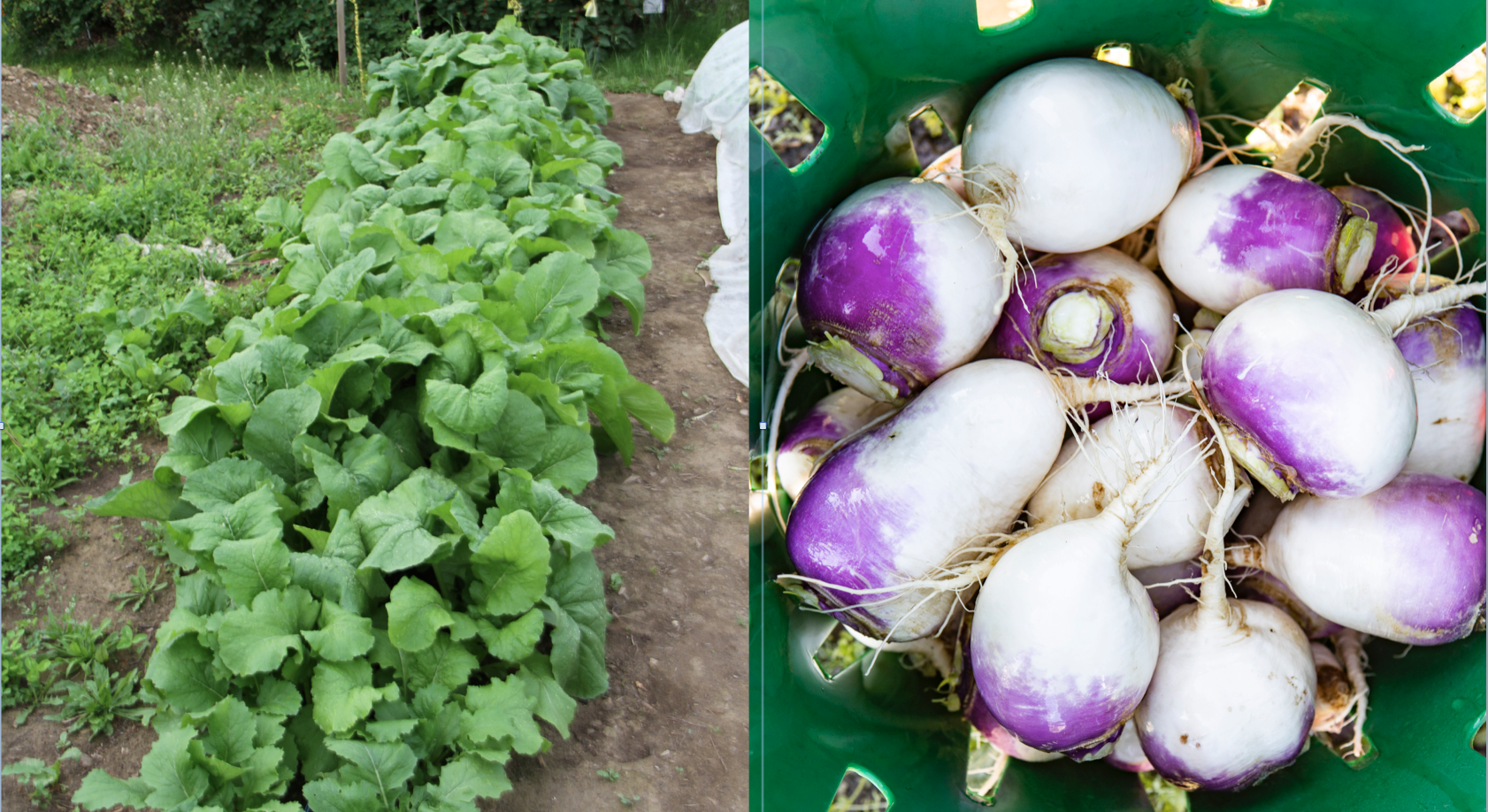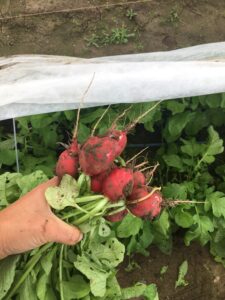The Brassicaceae family includes a bunch of vegetables that grow super well in Alaska’s often cool weather. Some examples are broccoli, cauliflower, cabbage, turnips, daikon radishes, radishes and rutabagas. I’m going to talk about a few of the below-ground or root brassica vegetables now.

You can eat turnips and their greens. Left, photo by Glenna Gannon; right, photo by J.R. Ancheta.
When you think of a radish, you probably think of a small, round, radish (red on the outside and white on the inside) commonly sold in grocery stores. These mature super quickly — in under three weeks. Examples of this type of radish are Cherriette or Cherry Belle. But radishes come in many shapes, sizes and colors. Some are long and cylindrical while some are short and stubby. Some are purple and some are white. Daikon radishes are the biggest radishes. They are white and spicy and make a good addition to kimchi or Korean sauerkraut. Here is a nice comparison chart of specialty radishes. At the Fairbanks Experiment Farm, we trialed just a few Daikon radishes in 2017 and found that Alpine and Summer Cross No. 3 grew big and long respectively.

These Cherry Belle red radishes were grown under a frost cloth low-tunnel that you can see in the background. Photo by Glenna Gannon.
For turnips, Purple Top White Globe is the longtime favorite (and in fact is an heirloom variety). But Hakurei turnips (and the similar Tokyo Cross) are quite a bit more crisp and neutral in the flavor and excellent raw. Tokyo Cross outperformed the other turnips in 2017 but we only tested a few varieties and did not test Hakurei. Purple Top White Globe seemed more susceptible to root maggots, probably because it takes longer to mature than the small varieties. Here are some ways to store, preserve, and eat turnips.
Rutabagas, the largest of all these brassica root crops, turn almost sweet when cooked and have a mild flavor. They have grown gargantuan in my garden. American Purple Top, Laurentian and Joan are all recommended varieties.
You’ll want to plant or thin smaller radishes to a 1-inch spacing, daikon radishes to 5 inches, turnips to a 3- to 5-inch spacing, and rutabagas to 4- to 7-inch spacing.
My two biggest challenges with growing these crops have been with them bolting (particularly with the small red radishes) and root maggots. To mitigate the tendency to bolt, plant early in the spring. For root maggots, cover the crops with row covers in the spring (floating or supported by hoops). The maggots are the larvae of small flies and can stunt or even kill the plants or just make them look a little unappetizing.
You can eat the greens of all of these crops. Radishes and turnips are best eaten raw, in my opinion, while I think of rutabagas as an ideal addition to soups.
Watch a video on this topic here. For more information on growing brassicas, see Extension’s publication on the topic. For more help choosing which brassica varieties to grow in Alaska, see what Extension recommends for your region (Interior or Southcentral) and which varieties performed best in trials.
Published in the Fairbanks Daily Newsminer October 4, 2020.